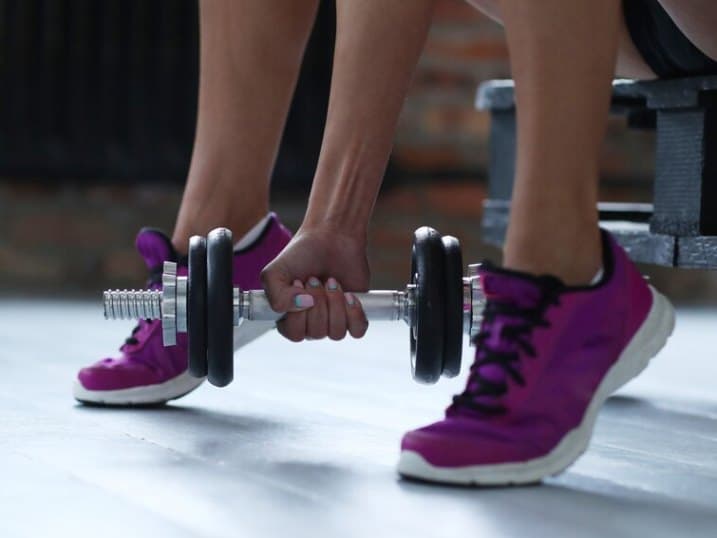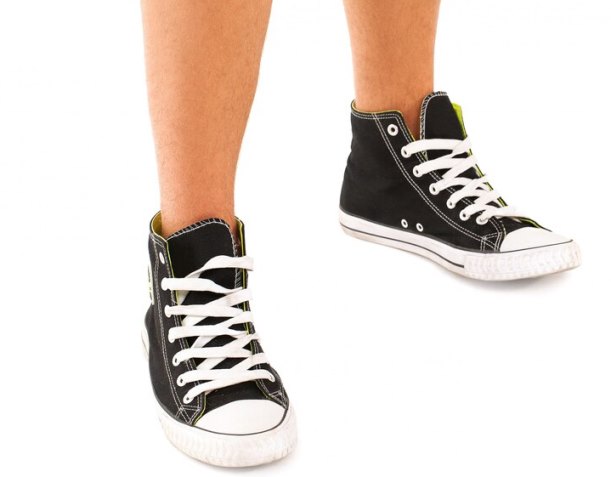Toe-to-Toe: Vans vs Converse for Lifting
Weightlifting is a popular fitness activity that requires proper form, technique, and equipment to perform safely and effectively. One of the key pieces of equipment for weightlifting is the right pair of shoes.
The wrong shoe can lead to injuries, improper form, and hinder your lifting progress. Two popular shoe choices for weightlifting are Vans and Converse. In this article, we will explore the differences between this shoes and which shoe is better for weightlifting.
Table of Contents
Overview of Vans and Converse
Vans and Converse are popular shoe brands that have been around for many years. Both brands have a loyal following and are often worn for casual wear and sports activities. While both shoes are versatile and can be used for a variety of activities, there are some differences between the two that can affect their performance in weightlifting.
Vans
Vans are a popular skateboarding shoe that gained popularity in the 1970s. They are known for their flat sole, sturdy construction, and canvas material. Vans come in various colors and designs and have become a fashion statement in recent years. They are often worn by skateboarders, BMX riders, and musicians.
Converse
Converse is a shoe brand that has been around since the early 20th century. They are known for their iconic Chuck Taylor All-Star design and have been a staple in the fashion industry for decades. Converse shoes have a canvas upper, rubber sole, and come in various colors and designs. They are popular among basketball players, musicians, and casual wearers.
| Feature | Vans | Converse |
|---|---|---|
| Design | Thick sole, flat heel | Thin sole, flat heel |
| Grip | Good grip | Good grip |
| Durability | Durable | Durable |
| Support | Minimal support | Minimal support |
| Comfort | Comfortable | Comfortable |
| Weight | Heavier | Lighter |
| Price | More expensive | More affordable |
| Recommended for | Squats, deadlifts, bench press | Squats, deadlifts, bench press |
| Foot shape suitability | Flat feet or low arches | High arches |
Differences between Lifting in Vans vs Converse
When it comes to weightlifting, the main differences between Vans and Converse are in their design, support, weight, and price. Check the details below:
Sole Design
One of the main differences between lifting in Vans and Converse is the sole design. Vans have a flat sole with no arch support, which allows for better ground contact and stability.
Converse, on the other hand, has a thin rubber sole with a slight arch support. This arch support can cause instability and improper form when lifting heavier weights.
Material
Vans are made of a sturdy canvas material that can withstand the wear and tear of skateboarding and weightlifting. They are also breathable, which helps keep your feet cool during your workout.
Converse, on the other hand, has a canvas upper and rubber sole. The canvas upper can become stretched out over time, which can affect the fit and support of the shoe.
Heel Design
Another difference between lifting in Vans vs Converse is the heel design. Vans have a flat heel, which allows for better ground contact and stability during lifts.
Converse has a slight heel, which can cause improper form and instability during lifts. This can lead to injuries and hinder your lifting progress.
Weight
Vans are generally heavier than Converse due to their sturdy construction and thicker sole. This added weight can provide more stability during lifts but can also be cumbersome for some lifters.
Converse, on the other hand, are lighter and more flexible, which can allow for better mobility during lifts.
Price
The price of Vans and Converse can vary depending on the style and design. Generally, Vans are more expensive than Converse due to their construction and durability.
Which Shoe is Better for Lifting?
After exploring the differences between lifting in Vans and Converse, it’s important to note that there is no one-size-fits-all answer to this question. The best shoe for lifting depends on your personal preferences, body mechanics, and the type of lifts you are performing. Here are some factors to consider when choosing between Vans and Converse for weightlifting:
Type of Lifts
Certain lifts require more stability and support than others. For example, deadlifts and squats require a flat sole and good ground contact, which makes Vans a better option.
However, lifts that require more mobility and flexibility, such as Olympic weightlifting, may require a more flexible shoe like Converse.
Foot Shape
The shape of your foot can also play a role in the shoe that is best for you. If you have flat feet or low arches, Vans may provide the necessary support and stability for your lifts.
However, if you have high arches, Converse may be a better option as they provide some arch support.
Comfort
Comfort is an important factor to consider when choosing a weightlifting shoe. You want a shoe that fits well, provides support where you need it, and doesn’t cause any discomfort during your lifts.
Both Vans and Converse can provide this level of comfort, but it’s important to try on both shoes and see which one feels better for you.
Budget
As mentioned earlier, Vans are generally more expensive than Converse. If you’re on a tight budget, Converse may be a more affordable option without sacrificing quality and durability.
FAQs
Can I use Vans or Converse for other types of exercises?
Yes, Vans and Converse can be used for a variety of exercises, including walking, running, and casual wear.
Are Vans or Converse better for high-intensity workouts?
It depends on the type of workout you’re doing. If you’re performing exercises that require more stability and support, Vans may be a better option. However, if you’re doing high-intensity exercises that require more mobility and flexibility, Converse may be a better option.
Can I wear Vans or Converse for weightlifting competitions?
It’s important to check with the rules and regulations of the competition you’re participating in. Some competitions may require specific types of weightlifting shoes, while others may allow a wider range of footwear.
Conclusion
Both Vans and Converse can be used for weightlifting, but they have different features and designs that can affect your lifting performance. When choosing between the two, it’s important to consider the type of lifts you’re performing, the shape of your feet, comfort, and budget. Ultimately, the best shoe for weightlifting is the one that fits well, provides the necessary support and stability, and feels comfortable during your lifts.

